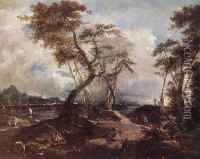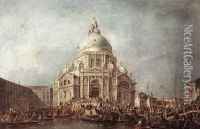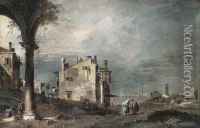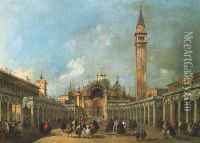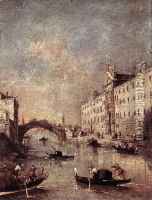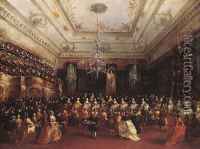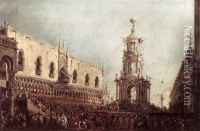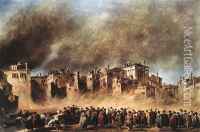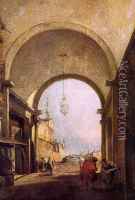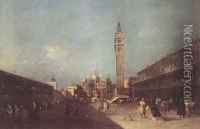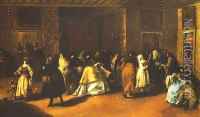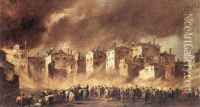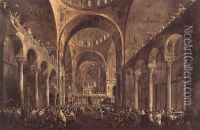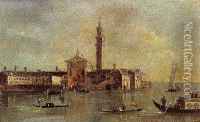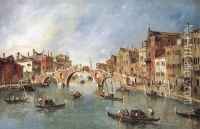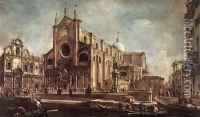Francesco Guardi Paintings
Francesco Guardi was an Italian painter of veduta, a genre of landscape or cityscape artwork, and is considered among the last practitioners of the classic Venetian school of painting. Born on October 5, 1712, in Venice, Italy, Guardi was part of an artistic family, with his father Domenico and his brothers Gian Antonio and Niccolò also being painters.
Initially working in his brother Gian Antonio's workshop, Guardi's early works were influenced by the Venetian masters such as Canaletto and, more directly, his brother. However, as his style developed, Guardi began to move away from the precise depiction of architectural details favored by Canaletto, towards a freer interpretation of the scenery.
Guardi is best known for his vedute of Venice, capturing the charm and daily life of the city with a more atmospheric and impressionistic style than his predecessors. His works often feature bustling markets, regattas on Venice's grand canals, and the city's renowned architecture. His paintings are characterized by their dynamic composition, fluid brushwork, and the use of light and color to evoke mood and atmosphere.
Despite the beauty of his paintings, Guardi did not achieve significant fame during his lifetime. It was only in the 19th century that his work gained recognition, influencing the Impressionist movement and being celebrated for his innovative approach to veduta painting.
Guardi's later life was marked by financial difficulties, and he died in relative obscurity on January 1, 1793, in Venice. Today, Francesco Guardi is celebrated as one of the most important vedutisti of the 18th century, and his paintings are held in high esteem, with his works exhibited in major museums around the world.

